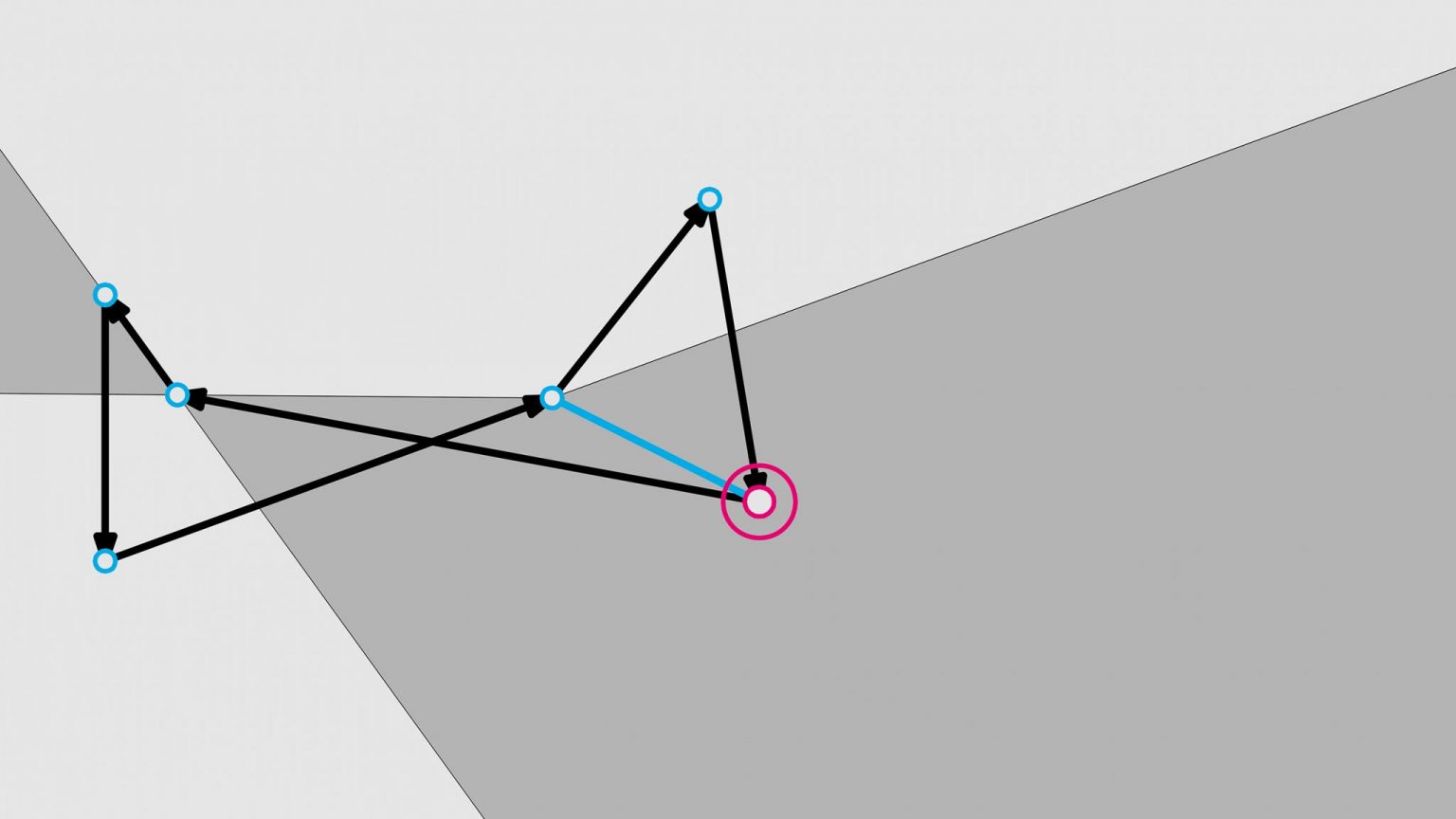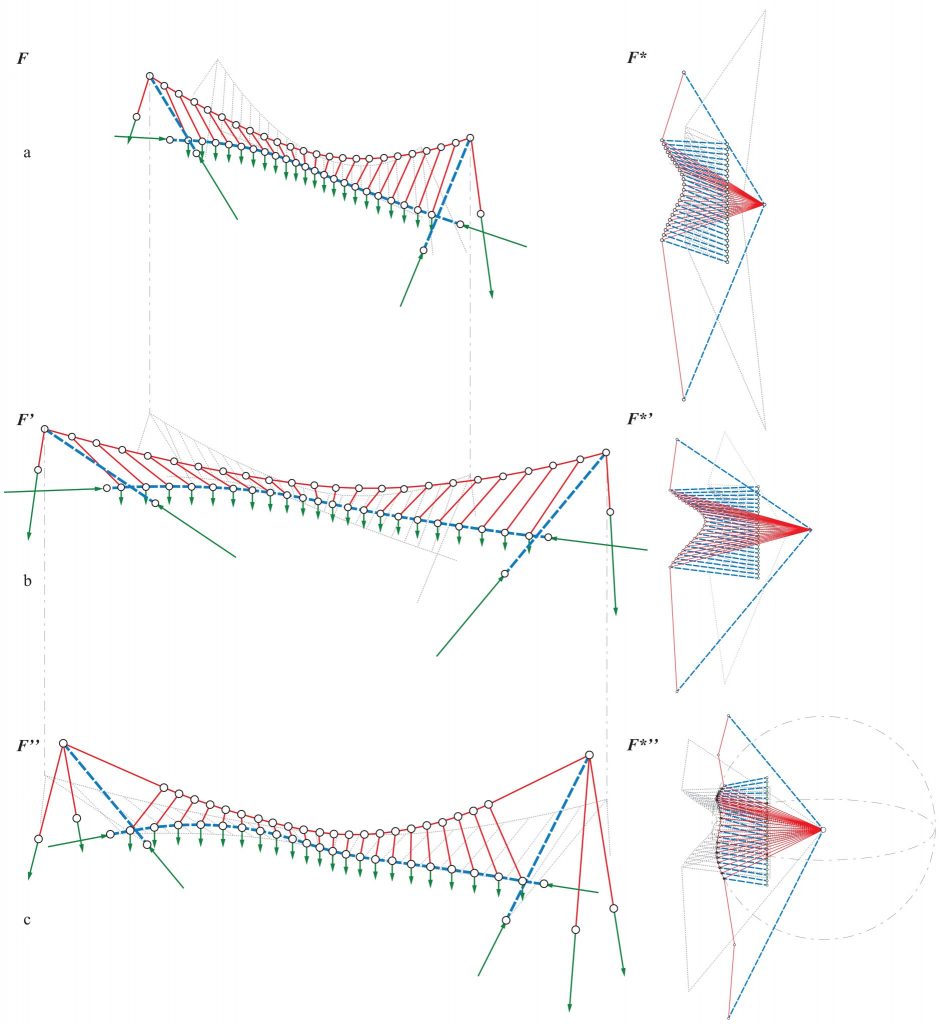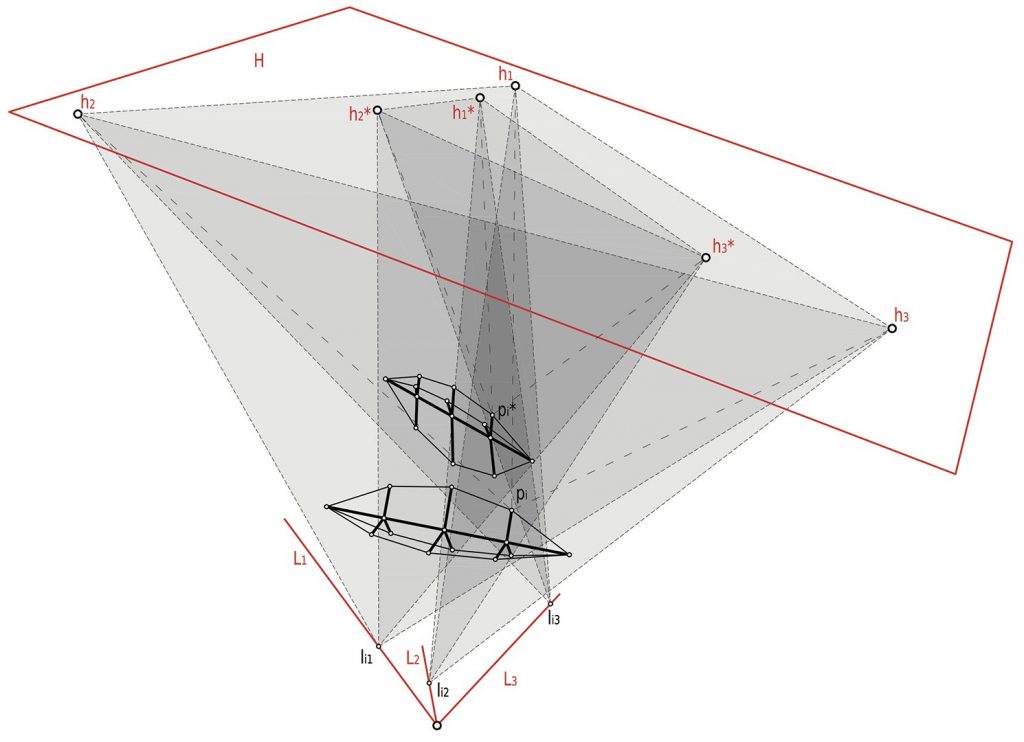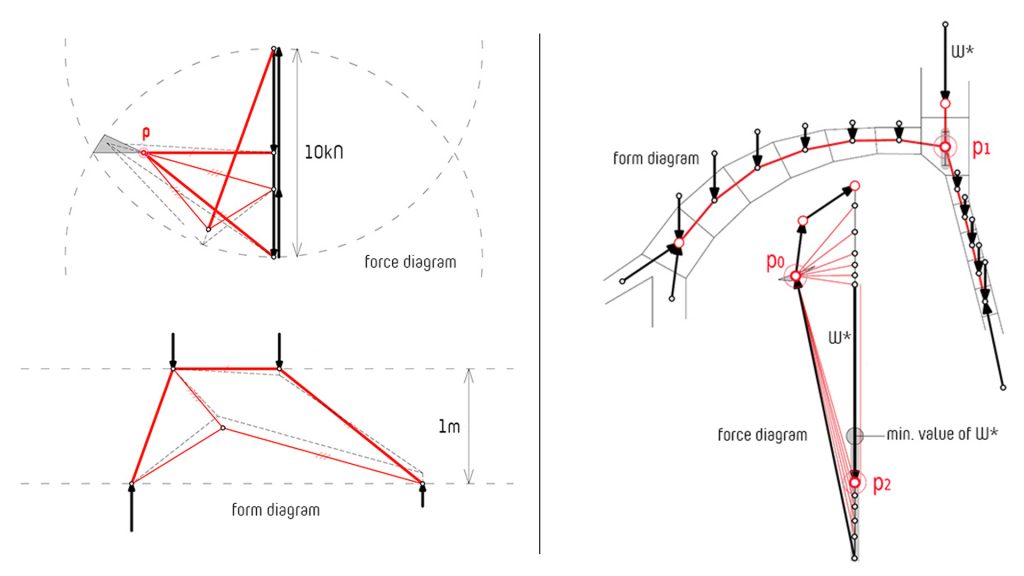extensions of graphic statics
Methods of graphic statics were created in the 19th Century, at a time when the pencil and the piece of paper were the common medium. Combined with contemporary graphical capabilities of computers, graphic statics gain new relevance for early-stage structural design. Rather than assuming that modern graphic statics are just a computerized version of classical graphic statics, the old methods leading to the construction of graphic statics diagrams should be reinvented in order for designers to benefit the most from the new digital medium.

Please note that the publication lists from Infoscience integrated into the EPFL website, lab or people pages are frozen following the launch of the new version of platform. The owners of these pages are invited to recreate their publication list from Infoscience. For any assistance, please consult the Infoscience help or contact support.
Vector-Based 3D Graphic Statics: a framework for the design of spatial structures based on the relation between form and forces
This article develops a vector-based 3D graphic statics framework that uses synthetic and intuitive graphical means for the analysis and design of spatial structures such as networks of bar elements in static equilibrium. It is intended to support the collaborative work of structural engineers and architects from the conceptual phase of the design process. Several procedures for the construction of a vector-based 3D force diagram for any given 3D form diagram with an underlying planar or non-planar graph are identified and described. In the non-planar case, the proposed procedures rely on the preliminary topological planarization of the graph by cutting the crossing edges and reconnecting them to one or more newly inserted auxiliary vertices. The resulting planar graph can be then used as a base for the assembly of the 3D force diagram, without altering the static equilibrium of the structure. An implementation of the proposed framework to real design scenarios is presented through two case studies. These examples show how to take advantage of the bi-directional manipulation of the diagrams in the structural design process.
International Journal of Solids and Structures. 2019-02-18. Vol. 167, p. 58-70. DOI : 10.1016/j.ijsolstr.2019.02.008.
other publications on the topic:
- Vector-Based 3D Graphic Statics: Transformations of Force Diagrams
IASS symposium 2017 (detailed record) - Constraint-Driven Design with Combinatorial Equilibrium Modelling
IASS symposium 2017 (detailed record) - Vector-Based 3D Graphic Statics (Part I): Evaluation of Global Equilibrium
IASS symposium 2016 (detailed record) - Vector-Based 3D Graphic Statics (Part II): Construction of Force Diagrams
IASS symposium 2016 (detailed record) - Vector-Based 3D Graphic Statics (Part III): Designing with Combinatorial Equilibrium Modelling
IASS symposium 2016 (detailed record) - Various perspectives on the extension of graphic statics to the third dimension
IASS-SLTE symposium 2014 (detailed record)
Please note that the publication lists from Infoscience integrated into the EPFL website, lab or people pages are frozen following the launch of the new version of platform. The owners of these pages are invited to recreate their publication list from Infoscience. For any assistance, please consult the Infoscience help or contact support.
Projective transformations of structural equilibrium
Direct methods that transform the geometry of a structure and conserve its static equilibrium are of particular interest for designers. They allow the exploration of alternative solutions at minimum computational cost. While parallel transformations (stretch, contraction, and skew) are easily understood and have been in use since long, nonparallel transformations that maintain static equilibrium have not been studied in detail. The contributions of this article are as follows. First, an extensive review of transformation methods maintaining static equilibrium of planar and spatial structures is carried out. Second, an alternative construction of projective transformation is developed as an original set of graphical operations. Third, the benefits and limitations of use of projective transformations are discussed for the first time. This article concludes that (1) projective transformations are of practical interest only for a restricted range of structural applications but (2) can significantly simplify the computational problem of geometric exploration of spatial networks in equilibrium with few or no external forces.
International Journal of Space STructures. 2016. Vol. 31, num. 2-4, p. 135-146. DOI : 10.1177/0266351116660796.
Please note that the publication lists from Infoscience integrated into the EPFL website, lab or people pages are frozen following the launch of the new version of platform. The owners of these pages are invited to recreate their publication list from Infoscience. For any assistance, please consult the Infoscience help or contact support.
A fully geometric approach for interactive constraint-based structural equilibrium design
This paper introduces computational techniques to support architects and structural designers in the shaping of strut-and-tie networks in static equilibrium. Taking full advantage of geometry, these techniques build on the reciprocal diagrams of graphic statics and enhance the interactive handling of them with two devices: (1) nodes — considered as the only variables — are constrained within Boolean combinations of graphic regions, and (2) the user modifies the diagrams by means of successive operations whose geometric properties do not at any time jeopardize the static equilibrium. This constructive approach enables useful design-oriented capabilities: a graphical control of multiple solutions, the direct switching of the dependencies hierarchy, the execution of dynamic conditional statements using static constraints, the computation of interdependencies, and coordinate-free methods for ensuring consistency between certain continuums of solutions. The paper describes a computer implementation of these capabilities.
Computer-Aided Design. 2015. Vol. 61, p. 42-57. DOI : 10.1016/j.cad.2014.04.001.
other publications:
- Constraint-Based Graphic Statics: New paradigms of computer-aided structural equilibrium design
JIASS 2013 (detailed record) - Interactive shaping of forces
Acadia conference 2014 (detailed record)